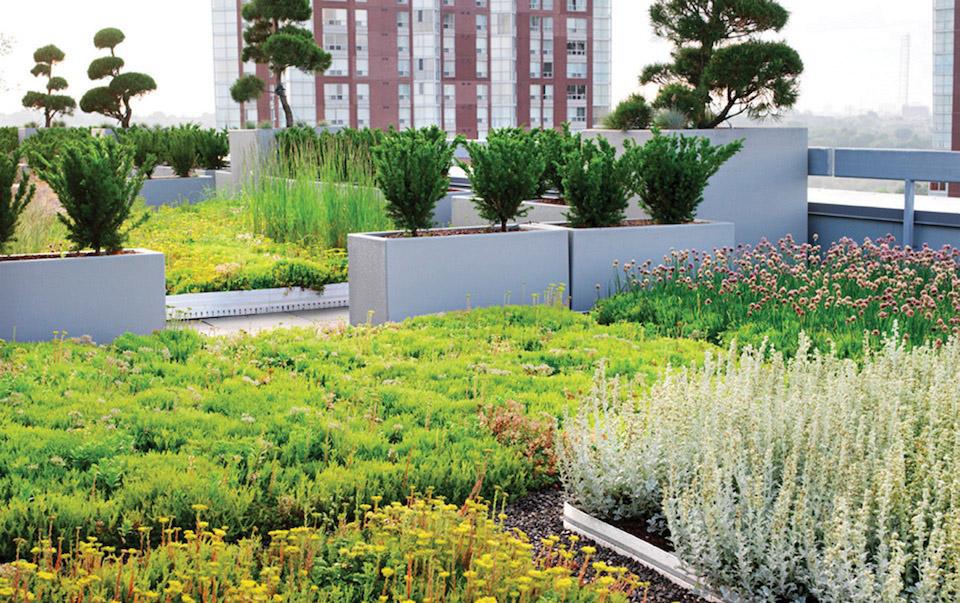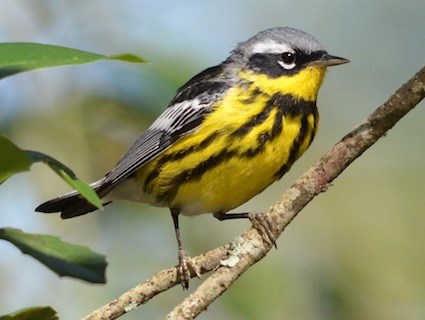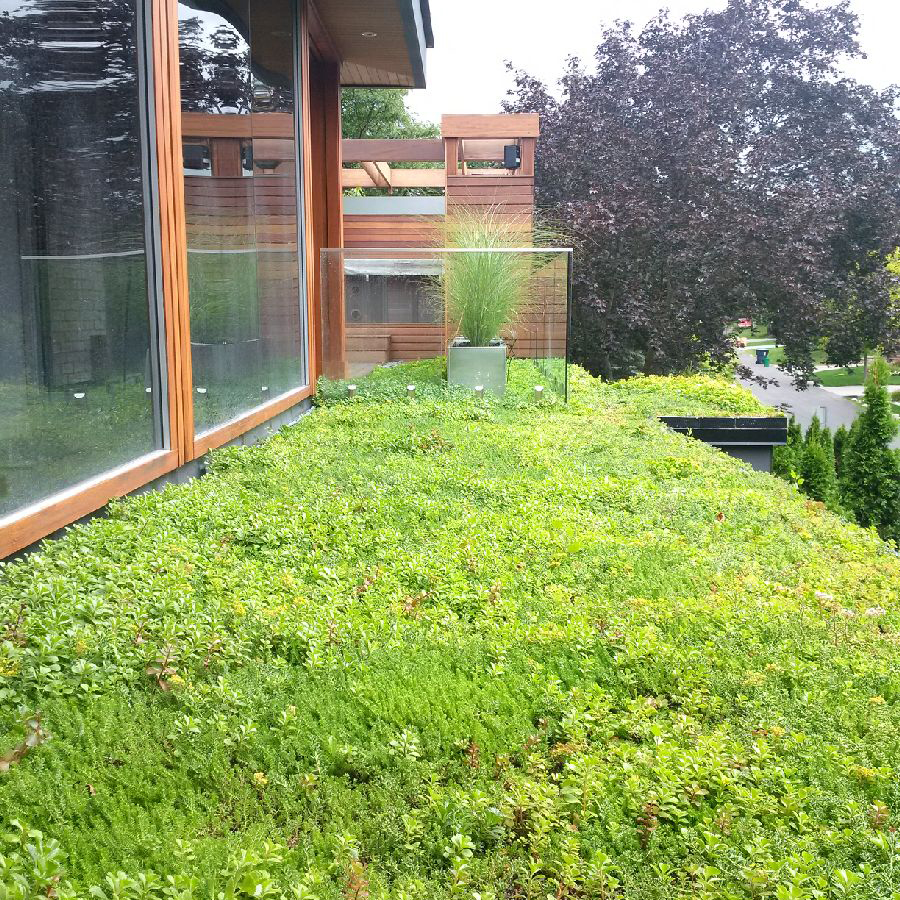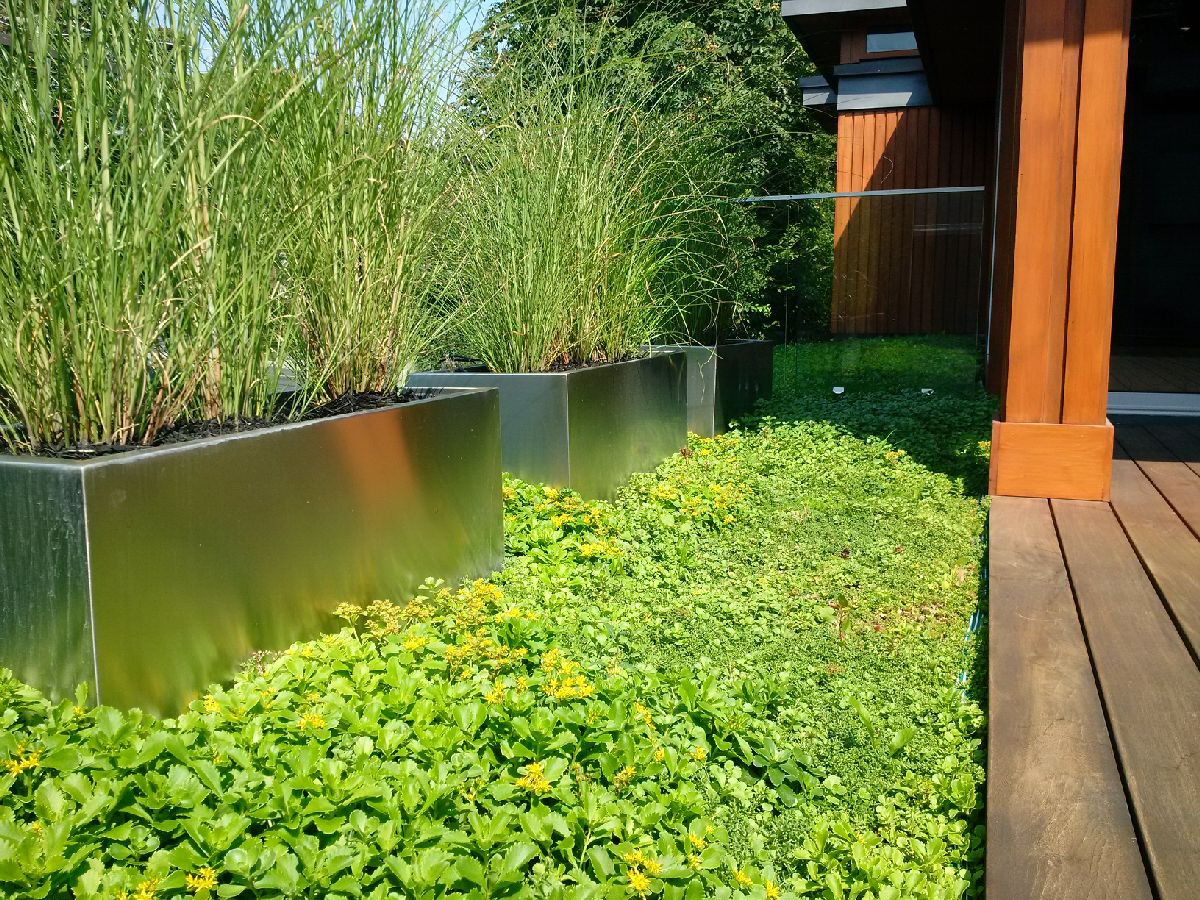
Green Roofs as Wildlife Habitats in Urban Landscapes
Europeans have long recognized the value of green roofs for their aesthetic appeal, ability to manage storm water, and provide insulation to a building. In recent years, green roofs have become popular in the United States and Canada. The city of Toronto is the first in North America to require installation of a green roof on most new buildings. Green roofs are covered in soil and plants, which are typically custom designed for each rooftop.
Green roofs have potential to serve as habitats for wildlife. This can help reduce the impact of urban sprawl on habitat loss, and is a way to incorporate more nature into our concrete jungles.
Many species of insects have been observed on green roofs, including bees, leafhoppers, ants, beetles, spiders, flies, snails, and others.3 Rare species of plants, lichen, and spiders have been found on European green roofs. 3 As vegetation variety increases and variability in green roof layout increases, so does the diversity of spider and beetle species on green roofs.3

Photo from https://www.allaboutbirds.org
Very little research has been done on how animals use green roofs in North America. One study conducted in New York City found that many migratory bird species feed and rest on green roofs as they pass through.2 New York and Eastern Ontario is part of the Atlantic flyway, one of the largest routes used by around 130 neotropical bird species during migration season.1,2 The study found 37 different bird species across 10 green rooftops in New York City, 70% of which were found only on green roofs.2 One likely reason for this is that green roofs are 6 times higher in insect diversity compared to traditional roofs, providing a food source for birds. The birds included flycatchers, magnolia warblers, peregrine falcons, woodcocks, and even hummingbirds.
Although the role of green roofs as wildlife habitat remains a work in progress, it is promising that a well-designed green roof can help support various insects and birds, and even aid conservation efforts by serving rare and endangered species affected by habitat loss. In addition to ecological benefits, having wildlife habitat on rooftops creates more green space similar to parks that people can enjoy in the sky.
References
- Issue of the Week: Birds on the Move! | First For Wildlife on WordPress.com. (n.d.). Retrieved February 7, 2016, from https://firstforwildlife.wordpress.com/2015/05/05/issue-of-the-week-birds-on-the-move/
- Nuwer, R. (2014). Wildlife Oases in New York’s Concrete Jungle – National Wildlife Federation. Retrieved February 7, 2016, from https://www.nwf.org/News-and-Magazines/National-Wildlife/Gardening/Archives/2014/New-York-Green-Roofs.aspx
- Oberndorfer, E., Lundholm, J., Bass, B., Coffman, R. R., Doshi, H., DUNNETT, N., … ROWE, B. (2007). Green Roofs as Urban Ecosystems: Ecological Structures, Functions, and Services. BioScience, 57(10), 823. http://doi.org/10.1641/B571005



